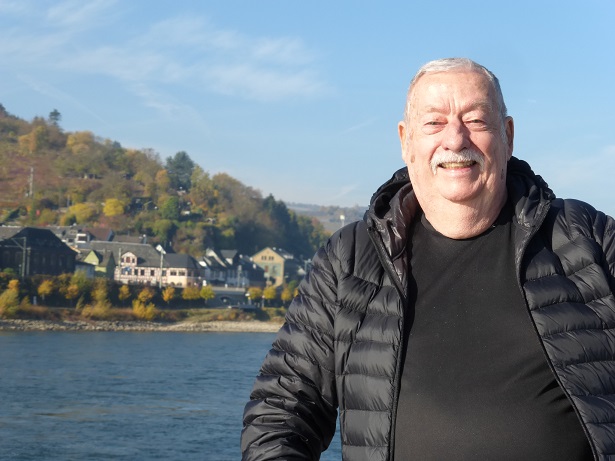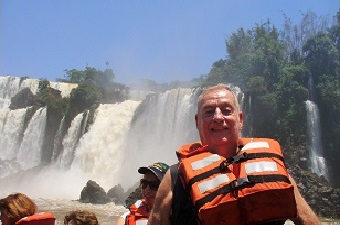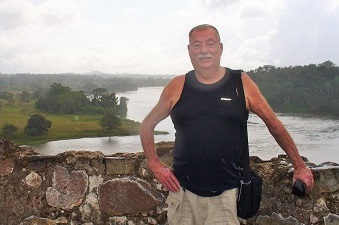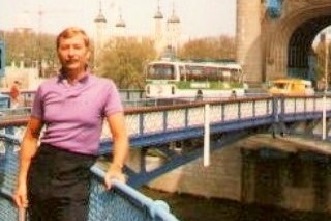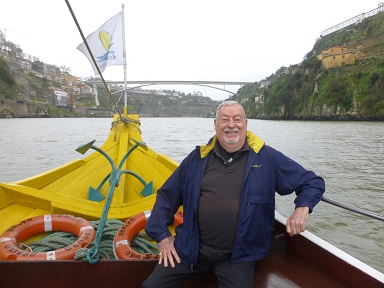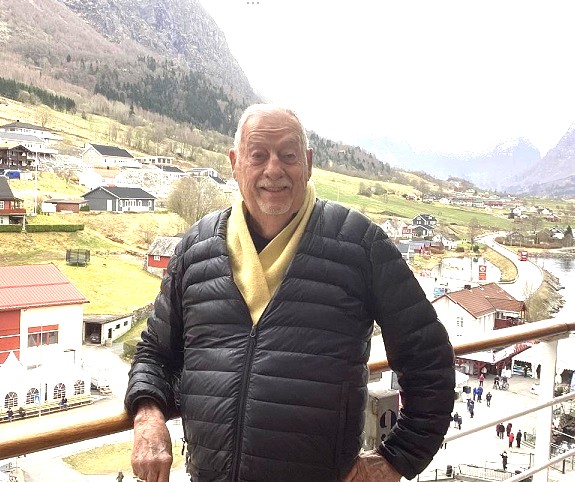|
Mediteranian Sea
- Algeria
The
Mediteranian Sea is a sea connected to the Atlantic Ocean, surrounded by the Mediterranean Basin and almost completely enclosed by land: on the north by Southern Europe and Anatolia, on the south by North Africa and on the east by the Levant. Although the sea is sometimes considered a part of the Atlantic Ocean, it is usually identified as a separate body of water. Geological evidence indicates that around 5.9 million years ago, the Mediterranean was cut off from the Atlantic and was partly or completely desiccated over a period of some 600,000 years, the Messinian salinity crisis, before being refilled by the Zanclean flood about 5.3 million years ago.
It covers an approximate area of 2.5 million km2 (965,000 sq mi), but its connection to the Atlantic (the Strait of Gibraltar) is only 14 km (8.7 mi) wide. The Strait of Gibraltar is a narrow strait that connects the Atlantic Ocean to the Mediterranean Sea and separates Gibraltar and Spain in Europe from Morocco in Africa. In oceanography, it is sometimes called the Eurafrican Mediterranean Sea or the European Mediterranean Sea to distinguish it from mediterranean seas elsewhere.
The Mediterranean Sea has an average depth of 1,500 m (4,900 ft) and the deepest recorded point is 5,267 m (17,280 ft) in the Calypso Deep in the Ionian Sea. The sea is bordered on the north by Europe, the east by Asia, and in the south by Africa. It is located between latitudes 30° and 46° N and longitudes 6° W and 36° E. Its west-east length, from the Strait of Gibraltar to the Gulf of Iskenderun, on the southwestern coast of Turkey, is approximately 4,000 km (2,500 miles). The sea's average north-south length, from Croatia’s southern shore to Libya, is approximately 800 km (500 miles). The Mediterranean Sea, including the Sea of Marmara (connected by the Dardanelles to the Aegean Sea), has a surface area of approximately 2,510,000 square km (970,000 square miles).
|
Rhine River
- Germany
The
Rhine
is one of the longest and most important river in Europe. It runs for over 1,232 km (766 mi) from its source in the in the Swiss Alps (in Switzerland), issuing from the Rheinwaldhorn Glacier 3,353m above sea level.
The Rhine flows through six countries -Switzerland, Principality of Liechtenstein, Austria, Germany, France and the Netherlands before flowing into the North Sea at Rotterdam.
The Rhine begins as a small stream in the Swiss Alps but soon gathers speed and volume on its way to Lake Constance, a source of drinking water for large parts of southern Germany. As it continues on its way to the North sea, the Rhine flows over the famous Rhine Falls at Schaffhausen and through the industrial town of Basel. There it becomes is a major transport route through Europe; transporting goods and raw materials by ship. It is now a wide river.
As the Rhine enters Germany it becomes the border between Germany and France. Through the Rhine Gourge the landscape changes again as the river narrows to form a steep sided-valley filled with vineyards and castles overlooking the river. Finally the Rhine reaches the Netherlands , a completely flat country, where it joins several other rivers on its final journey to Rotterdam and the sea.
|
South Pacific
- Fiji
The
North & Southern Pacific
Ocean is the largest and deepest of Earth's oceanic divisions. It extends from the Arctic Ocean in the north to the Southern Ocean (or, depending on definition, to Antarctica) in the south and is bounded by Asia and Australia in the west and the Americas in the east.
At 165,250,000 square kilometers (63,800,000 square miles) in area (as defined with an Antarctic southern border), this largest division of the World Ocean—and, in turn, the hydrosphere—covers about 46% of Earth's water surface and about one-third of its total surface area, making it larger than all of Earth's land area combined. Both the center of the Water Hemisphere and the Western Hemisphere are in the Pacific Ocean. The equator subdivides it into the North Pacific Ocean and South Pacific Ocean, with two exceptions: the Galápagos and Gilbert Islands, while straddling the equator, are deemed wholly within the South Pacific. Its mean depth is 4,280 meters (14,040 feet). The Mariana Trench in the western North Pacific is the deepest point in the world, reaching a depth of 10,911 meters (35,797 feet). The western Pacific has many peripheral seas.
Though the peoples of Asia and Oceania have traveled the Pacific Ocean since prehistoric times, the eastern Pacific was first sighted by Europeans in the early 16th century when Spanish explorer Vasco Núñez de Balboa crossed the Isthmus of Panama in 1513 and discovered the great "southern sea" which he named Mar del Sur (in Spanish). The ocean's current name was coined by Portuguese explorer Ferdinand Magellan during the Spanish circumnavigation of the world in 1521, as he encountered favorable winds on reaching the ocean. He called it Mar Pacífico, which in both Portuguese and Spanish means "peaceful sea".
|
Dead Sea
- Jordan
The
Dead Sea
is a salt lake bordered by Jordan to the east and Israel and the West Bank to the west. It lies in the Jordan Rift Valley, and its main tributary is the Jordan River.
Its surface and shores are 430.5 metres (1,412 ft) below sea level, Earth's lowest elevation on land. It is 304 m (997 ft) deep, the deepest hypersaline lake in the world. With a salinity of 342 g/kg, or 34.2% (in 2011), it is one of the world's saltiest bodies of water – 9.6 times as salty as the ocean – and has a density of 1.24 kg/litre, which makes swimming similar to floating. This salinity makes for a harsh environment in which plants and animals cannot flourish, hence its name. The Dead Sea's main, northern basin is 50 kilometres (31 mi) long and 15 kilometres (9 mi) wide at its widest point.
The Dead Sea has attracted visitors from around the Mediterranean Basin for thousands of years. It was one of the world's first health resorts (for Herod the Great), and it has been the supplier of a wide variety of products, from asphalt for Egyptian mummification to potash for fertilisers. People also use the salt and the minerals from the Dead Sea to create cosmetics and herbal sachets.
The Dead Sea is receding at an alarming rate; its surface area today is 605 km2 (234 sq mi), having been 1,050 km2 (410 sq mi) in 1930. Multiple canals and pipelines were proposed to reduce its recession, which had begun causing many problems. The Red Sea–Dead Sea Water Conveyance project, carried out by Jordan, will provide water to neighbouring countries, while the brine will be carried to the Dead Sea to help stabilise its levels. The first phase of the project is scheduled to begin in 2018 and be completed in 2021.
|

 most famous rivers I have had the good fortune to be on plus other bodies of water such as seas and bays. Three rivers are the longest in the world and many others are the longest in their respective countries where they flow.
most famous rivers I have had the good fortune to be on plus other bodies of water such as seas and bays. Three rivers are the longest in the world and many others are the longest in their respective countries where they flow.

